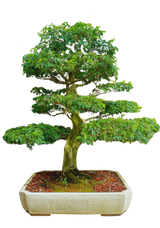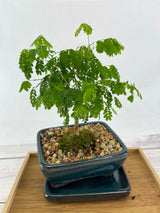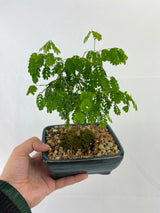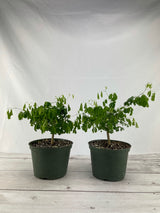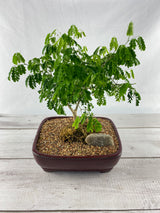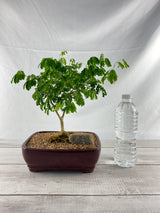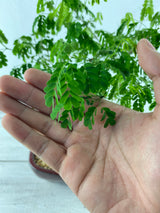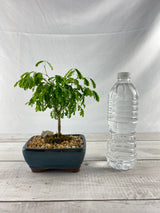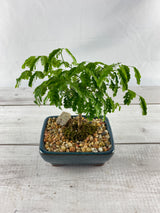The Brazilian Rain Tree (Pithecellobium tortum) is native to the rainforests of Brazil. One of the unique features of this hardwood species is that the leaves curl up in the evening and open up when the sun comes out. It also has white or pink flowers with a pleasant fragrance. Although it will tolerate dry conditions for short spells, it prefers evenly moist soil.
The Brazilian Rainforest Tree loves lots of sunlight and can be kept outside as long as the temperature stays above 8° celsius. When in a Bonsai pot, it is best to protect it from mid-day sun in a bit of shade, but direct morning and afternoon sun if possible.
BONSAI CARE
The Brazilian Rainforest Tree thrives in heat and light. When grown indoors, it needs 8 hours of direct sunlight a day to thrive. This tree will almost certainly need a grow light to supplement light unless placed in a large south-facing window.
Watering: Keep the root ball moist without letting it dry out completely. If using a moisture meter, try to maintain at least 30% moisture. The Brazilian Rainforest Tree will also benefit from regular misting and a humidity tray.
Fertilizing:
- During the growing season (Spring to Fall), fertilize with a liquid fertilizer every week or once a month with a solid fertilizer.
- During the winter months, use liquid fertilizer once a month or a solid fertilizer for the whole winter.
- Never fertilize a weak or unhealthy Bonsai.
Pruning: The Brazilian Rainforest Tree can withstand pruning but always leave a nub when pruning branches as some die-back might occur. Although the Brazilian Rainforest Tree can be wired, it is easier to shape using guy wires.
Repotting: it is recommended to be repotted every two years in the Spring or early summer. Older Bonsai can go three to four years between repotting. Trim the root ball only on the edges.
PRODUCT DETAILS
YOUNG: 6" - 12" tall, comes in a 6" grower's pot.
SHOHIN MATURE: 6"-12" tall, comes in a 5" handmade ceramic pot.
MATURE: 8" - 16" tall, comes in an 8" handmade ceramic pot.
These are not seeds - But an Actual Living Bonsai Tree.
Please see our Choosing a Bonsai page for the age and dimensions regarding the different stages of our Bonsai (Baby, Young, & Mature).










